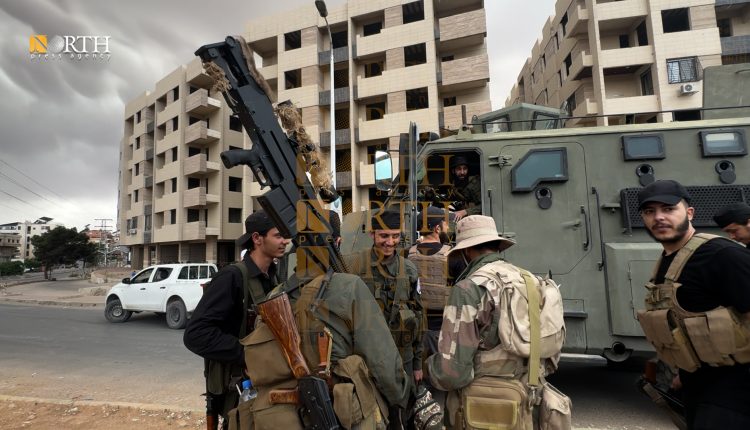Israeli Drone Strike Kills Syrian Security Officer Amid Tensions near Damascus
By Kardo Roj
DAMASCUS, Syria (North Press) – A Syrian security officer was killed and several others wounded on Wednesday following an Israeli drone strike targeting a security outpost on the outskirts of Sahnaya, in the southwestern countryside of Damascus, according to a statement from the Syrian Ministry of Interior.
This marks the second aerial attack attributed to Israel on the area since early Wednesday, coming amid a broader security crisis involving clashes between government forces and armed groups labeled by state media as “unlawful.”
The Ministry stated via Telegram that the drone strike hit a “security gathering point,” resulting in casualties and prompting an immediate military response.
Israeli Justification and Regional Implications
In a rare joint statement, Israeli Prime Minister Benjamin Netanyahu and Defense Minister Israel Kayz confirmed responsibility for the strike, calling it a “preemptive warning operation” against a group allegedly preparing attacks from within Syrian territory.
While Israel has regularly targeted what it describes as Iranian-linked infrastructure or weapons convoys inside Syria, this latest incident appears tied to fast-evolving security dynamics near the capital, underscoring the multi-layered complexity of the Syrian conflict.
Though Israel did not elaborate on the nature of the perceived threat, analysts suggest that the operation may be aimed at disrupting the activities of non-state actors operating near the Damascus countryside—an area increasingly marked by unrest.
Escalating Unrest in Ashrafiyat Sahnaya
The drone strike coincides with escalating internal clashes in Sahnaya and nearby Ashrafiyat Sahnaya, where government forces have been engaged in battles with armed groups since Tuesday. These groups, whose composition remains unclear, reportedly moved into Ashrafiyat Sahnaya following heavy fighting in Jaramana, a predominantly Druze suburb.
A Syrian government source confirmed to North Press that the Ministry of Defense had successfully “regained control” of central Sahnaya following several hours of intense fighting. The source added that armed elements had withdrawn toward Ashrafiyat Sahnaya.
Residents reported military reinforcements and checkpoints being established throughout the area, with military convoys seen entering both towns throughout the day. Eyewitnesses described sporadic gunfire, limited civilian movement, and widespread tension.
Security Measures and Broader Context
In response to the deteriorating situation, Syrian authorities have closed off parts of the main Daraa highway and deployed additional Internal Security Forces along secondary routes to protect civilian passage and stabilize the region.
The clashes in Sahnaya and surrounding areas come just one day after deadly violence in Jaramana, which left over 20 individuals dead or injured. While the government has moved quickly to broker local agreements to de-escalate tensions, the recurrence of armed violence suggests deeper structural instability.
These recent developments have raised concerns about the ability of Damascus to maintain order in peripheral districts, especially as local grievances, power vacuums, and shifting allegiances create opportunities for non-state groups to assert influence.
The Israeli strikes and internal clashes in the Damascus countryside represent a critical juncture for regional security. As the Syrian government confronts both external threats and domestic unrest, the situation remains fragile.
Meanwhile, the potential for miscalculation between Syrian and Israeli forces continues to pose a risk of escalation, especially in areas where multiple armed actors operate in close proximity.
The unfolding events also highlight the persistent challenge of consolidating security in areas outside direct central control, where informal networks and local dynamics often shape outcomes more than formal governance.
While Damascus has reasserted control over Sahnaya for now, the fluid nature of the conflict means further instability cannot be ruled out.

